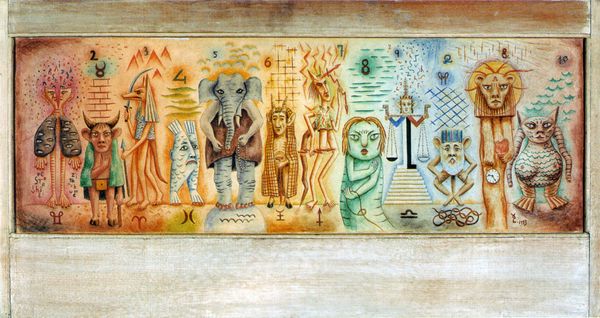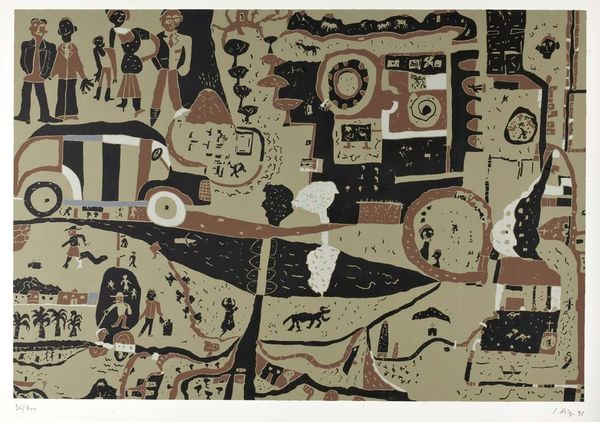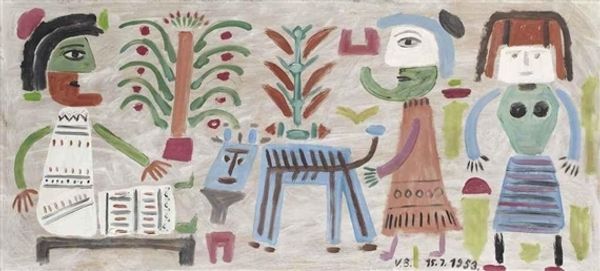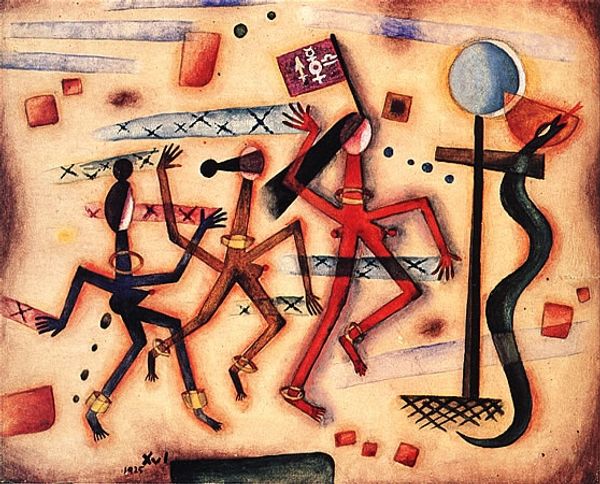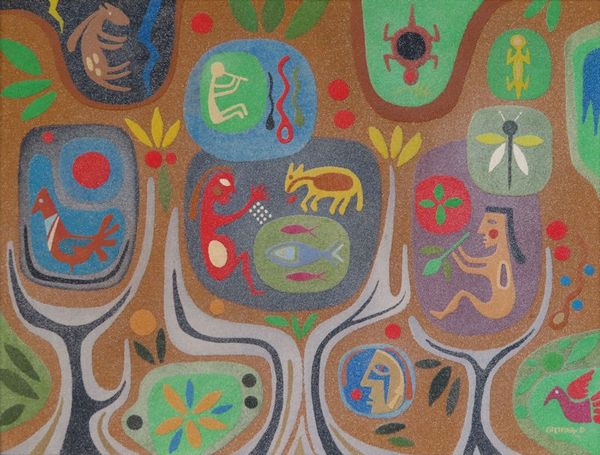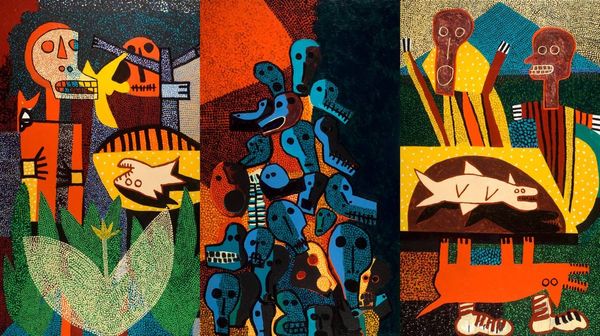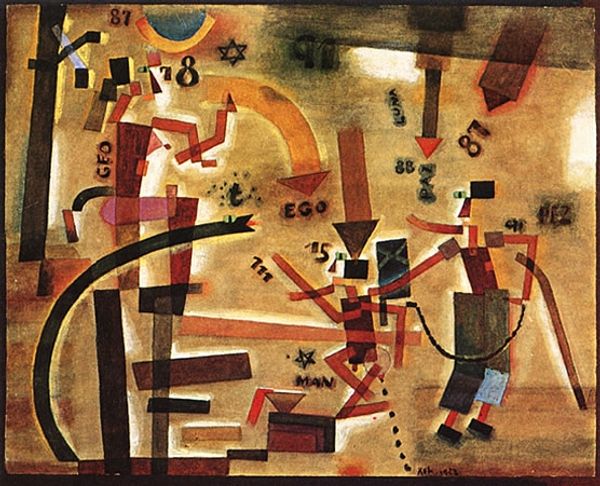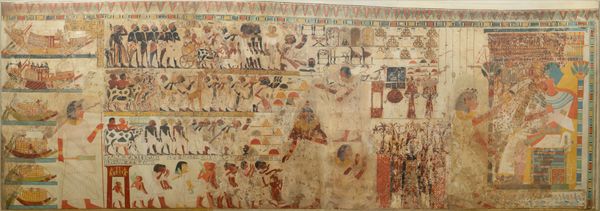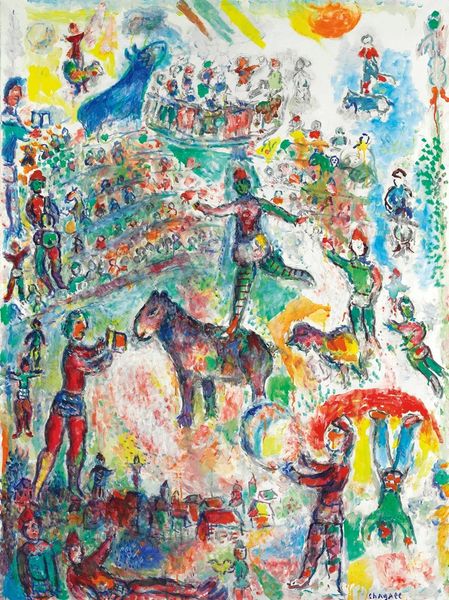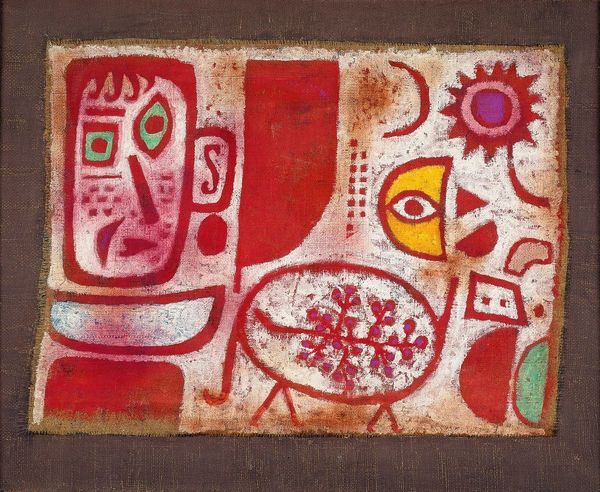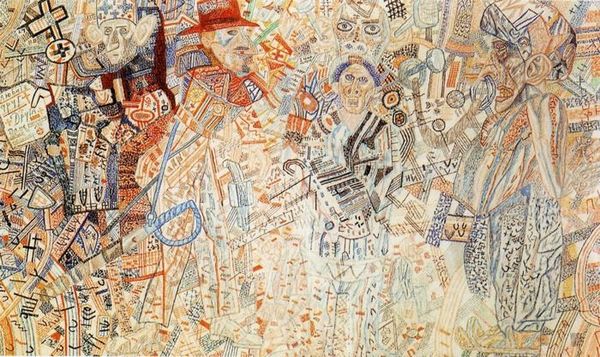
mixed-media, painting
#
mixed-media
#
organic
#
water colours
#
painting
#
figuration
#
surrealism
#
mixed media
#
watercolor
Dimensions: 129.5 x 202.5 cm
Copyright: Victor Brauner,Fair Use
Curator: Looking at Victor Brauner’s 1954 mixed-media painting, “Prelude to a Civilization,” one immediately senses a… well, a hopeful strangeness. Editor: Yes! My initial impression is one of playful chaos. There’s a bestiary of beings crammed within that outline. Is it supposed to be a horse or perhaps an ancient map? A landmass teeming with imagined life? Curator: I'm inclined to see it as more than playful; consider the sociopolitical climate of 1954. Brauner, having fled Nazi persecution and grappling with themes of identity and belonging, was acutely aware of societal ruptures. These figures within the frame can be interpreted as the diverse fragments of culture—each carrying histories of conflict and potential reconciliation. Editor: Absolutely. The forms do seem laden with meaning. Those repetitive mask-like faces…almost totemic. The juxtaposition of familiar animal forms with those peculiar humanoids evokes primal mythologies and ancient cosmologies, and yet their flattened appearance and stylized execution feel distinctly modern. Are these attempts to build a shared iconography, a new set of symbolic anchors after immense cultural trauma? Curator: Precisely. Brauner engaged heavily with Surrealism, which itself drew on psychoanalysis and the unconscious to unlock new modes of understanding the self and society. In "Prelude to a Civilization", this collective identity emerges from the subconscious, becoming a vibrant assertion of hybridity over homogeneity. The very materials, a mix of paint and media, speaks to this confluence of disparate elements seeking cohesion. Editor: It’s fascinating how he condenses entire narratives within each little symbol. That figure carrying a smaller being in its abdomen… a commentary on inherited trauma, or on the nurturing of future generations in a damaged world, maybe? The way they all reside within this…protective form… adds a powerful dimension. What would you say Brauner tries to represent? Curator: In his post-war work, I see a struggle, a search for universal connections through these personal hieroglyphs. By pulling these disparate images, he might be offering us, if not answers, then at least the language to explore the path towards common ground. Editor: Incredibly insightful! It definitely gives me pause to think of what a symbolic representation of our own world might look like...what shapes would contain our histories and our hopes?
Comments
No comments
Be the first to comment and join the conversation on the ultimate creative platform.

